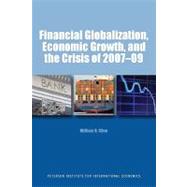
| Preface | p. ix |
| Acknowledgments | p. xiii |
| Overview | p. 1 |
| Research Context | p. 2 |
| Key Analytical Issues | p. 4 |
| Theoretical Expectations | p. 11 |
| Empirical Literature | p. 13 |
| Synthesis Estimates | p. 18 |
| Quantifying Crisis Effects | p. 25 |
| Quantifying Debt versus Equity Effects | p. 26 |
| Implications of the 2007-09 Crisis | p. 28 |
| Conclusion | p. 33 |
| Covered Interest Parity as a Measure of Financial Openness | p. 37 |
| Analogy to Gains from Trade | p. 39 |
| Tests for Compositional Differences in Growth Impact of Financial Openness | p. 41 |
| A Critical Survey of Literature | p. 45 |
| Cross-Country Growth Regressions | p. 46 |
| Theoretical and Calibrated Studies | p. 116 |
| Diversification Gains and Consumption Smoothing | p. 119 |
| Summary Surveys | p. 131 |
| Conclusion | p. 142 |
| Weighting Cross-Country Regression Results in Meta-Analysis | p. 145 |
| Gourinchas-Jeanne Model of Gains from Financial Integration | p. 155 |
| Gemini: A Simple Model of International Risk Sharing | p. 161 |
| Potential Circularity in the Knack-Keefer Government Replication Variable | p. 161 |
| Current Account Deficits and Growth | p. 167 |
| The Impact of Financial Globalization on Growth: Country-Specific Estimates | p. 171 |
| The Synthesis Approach | p. 172 |
| Trends in Financial Openness | p. 173 |
| Calibration | p. 180 |
| Results for General Financial Openness | p. 183 |
| Weighting Nonsignificant Model Estimates Results for Direct Investment Openness | p. 201 |
| Comparison with Theoretical Expectations | p. 208 |
| Conclusion | p. 213 |
| Normalizing Model Coefficients for Synthesis Analysis | p. 217 |
| Temporary versus Permanent Growth Acceleration in the Henry Model | p. 223 |
| Degree of Correlation among Alternative Measures of Financial Openness | p. 229 |
| The Financial Crisis of 2007-09 and Financial Globalization | p. 235 |
| Evolution | p. 236 |
| Causes | p. 238 |
| Status by Late 2009 | p. 240 |
| Implications for Financial Openness in Emerging-Market Economies | p. 255 |
| Conclusion | p. 260 |
| Key Events and Policy Responses | p. 261 |
| Causes of the Crisis | p. 279 |
| Contemporary Policy Diagnoses from September 2008 to February 2009 | p. 315 |
| Economics of the Geithner Plan | p. 315 |
| Financing Gaps, Reserves, and Official Finance in the Global Financial Crisis | p. 325 |
| References | p. 333 |
| Index | p. 345 |
| Table of Contents provided by Ingram. All Rights Reserved. |
The New copy of this book will include any supplemental materials advertised. Please check the title of the book to determine if it should include any access cards, study guides, lab manuals, CDs, etc.
The Used, Rental and eBook copies of this book are not guaranteed to include any supplemental materials. Typically, only the book itself is included. This is true even if the title states it includes any access cards, study guides, lab manuals, CDs, etc.